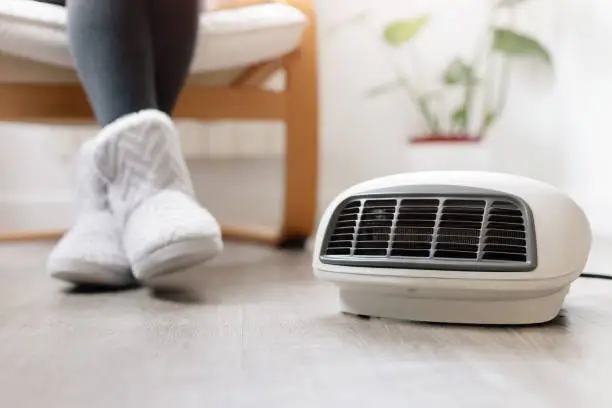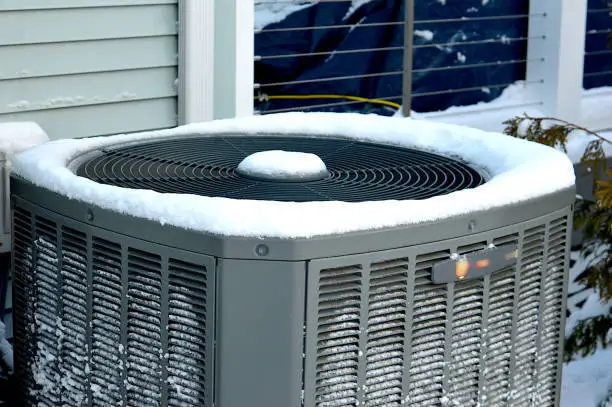
Table of Contents
In the scorching heat of summer, a reliable air conditioning system is essential for maintaining comfort and productivity in homes and businesses alike. Among the various options available, the 3.5-ton AC unit stands out as a popular choice for its balance of efficiency and cooling capacity. However, before investing in such a system, it’s crucial to understand the associated costs to make an informed decision. In this guide, we’ll delve into the factors influencing the cost of installing a 3.5-ton AC unit, provide a breakdown of expenses, and offer tips for cost-effective installation.
What is a 3.5-Ton AC Unit?
In the realm of air conditioning, a “ton” refers to the unit of measurement for cooling capacity. A 3.5-ton AC unit can effectively cool a space of approximately 1,600 to 2,000 square feet, making it suitable for medium to large-sized homes or commercial establishments. With its optimal balance of power and efficiency, a 3.5-ton AC unit ensures comfortable indoor temperatures even during the hottest days of summer.
Factors Affecting 3.5-ton AC Unit Cost
Several factors influence the overall 3.5-ton AC unit cost of installation. These include:
- Size and Layout of the Building: The size and layout of the building play a significant role in determining the complexity of the installation process. Larger spaces may require additional ductwork or zoning systems to ensure even distribution of cool air, which can contribute to higher installation costs.
- Existing Infrastructure: The condition of existing ductwork, electrical wiring, and HVAC infrastructure can impact installation costs. In some cases, upgrades or repairs may be necessary to accommodate the new AC unit, adding to the overall expenses.
- Energy Efficiency Ratings and Features: Energy-efficient models typically come with a higher upfront cost but offer long-term savings on energy bills. Features such as variable-speed motors, programmable thermostats, and zoning systems can enhance efficiency but may incur additional costs during installation.
- Brand and Model Selection: The brand and model of the AC unit chosen can significantly affect installation costs. Premium brands or models with advanced features may come with a higher price tag, while budget-friendly options may offer more affordability.
- Local Labor and Material Costs: Labor and material costs vary depending on location and market demand. Higher labor rates or the need for specialized equipment can increase installation expenses, particularly in metropolitan areas.
- Additional Accessories or Upgrades: Optional accessories such as smart thermostats, air purifiers, or UV lights can enhance comfort and indoor air quality but may add to the overall cost of installation.
Contact HVAC Service Solutions to find out a 3.5-ton AC unit cost in your particular case.
Detailed Breakdown of Average Installation 3.5-Ton AC Unit Cost

When considering the installation of a 3.5-ton air conditioner unit, it’s essential to understand the breakdown of costs involved. Here’s a detailed overview:
Cost of the Unit Itself (8-9x)
The initial investment in the AC unit itself is a significant component of the overall cost. A 3.5-ton AC unit cost typically varies from $3,500 to $4,500. However, the final cost can vary based on factors such as the brand, model, and features selected. Higher-end models with advanced technology and energy-efficient features may fall on the higher end of the price spectrum.
Installation Labor Costs (5x)
Professional installation is crucial for ensuring the optimal performance and longevity of your AC system. Installation labor costs typically range from $1,500 to $3,000. This includes the expertise and labor of skilled HVAC technicians to properly install the unit, as well as any necessary permits or inspections required by local authorities. The complexity of the installation process, such as the need for ductwork modifications or electrical upgrades, can influence labor costs.
Additional Materials and Equipment (3-4x)
In addition to the AC unit itself, various additional materials and equipment may be required during installation. These can include ductwork, refrigerant lines, insulation, and other components necessary for proper installation and operation. The cost of these additional materials typically adds approximately $1,000 to $2,000 to the total installation cost. The specific requirements will depend on factors such as the layout of the building and any existing infrastructure.
Permits and Inspections
Before installing a new AC unit, it’s essential to obtain the necessary permits and undergo inspections to ensure compliance with local building codes and regulations. Permit fees and inspection costs vary by location but typically range from $100 to $500. These costs are essential for ensuring the safety and legality of the installation process and should be factored into the overall budget.
For example, the 3.5-ton Rheem AC unit cost can range from $4,000 to $5,000, depending on the specific model, selected additional features, and the installation location. This price may include the unit itself as well as installation, but additional expenses may be incurred for necessary materials, labor-intensive work, and additional services such as permits and inspections.
You can find a more detailed guide on AC installation expenses via the link below.
https://thehvacservice.ca/central-air-conditioner-installation-expenses/
By understanding the breakdown of average installation costs for a 3.5-ton AC unit, homeowners and businesses can better prepare for the financial investment involved in upgrading their HVAC systems.
Tips for Cost-Effective Installation
When planning the installation of a 3.5-ton air conditioner, it’s essential to consider various strategies to optimize your investment and minimize costs. Here are some detailed tips to help you achieve cost-effective installation:
Obtain Multiple Quotes
When seeking estimates, reach out to several reputable HVAC contractors in your area. Compare not only the prices but also the services offered and the reputation of each contractor. Look for companies with a track record of successful installations and positive customer feedback.
Prioritize Energy Efficiency
Investing in an energy-efficient 3.5-ton AC unit can lead to substantial long-term savings on energy bills. Look for models with a high SEER rating, indicating superior energy efficiency. Additionally, explore available rebates, incentives, or tax credits for energy-efficient HVAC systems in your area to offset upfront costs.
Plan Installation Timing Strategically
Choosing the right time for installation can result in cost savings and faster service. Consider scheduling installation during off-peak seasons when HVAC contractors are less busy and may offer discounts or promotions. By planning ahead, you can secure a convenient installation date and potentially negotiate lower prices.
Explore Financing Options
If the upfront cost of a new AC unit is a concern, explore financing options offered by HVAC contractors or manufacturers. Many companies offer flexible financing plans with competitive interest rates and manageable repayment terms. Be sure to review the terms and conditions of each financing option carefully to choose the one that best fits your budget and financial goals.
By implementing these tips for cost-effective installation, you can make informed decisions and maximize the value of your investment in a 3.5-ton AC unit.
How Much Can I Save Up with AC Government Rebates?
An air conditioning rebate is a financial incentive provided by governments, utility companies, or other organizations to encourage the purchase and installation of energy-efficient air conditioning systems. These rebates aim to improve HVAC system effectiveness, reduce energy consumption, and minimize environmental impact.
The application process for government air conditioning rebates is typically straightforward. Eligibility usually involves scheduling an energy assessment, completing upgrades, and undergoing a post-retrofit assessment to receive incentives.
In Canada’s primary rebate program, the Home Efficiency Rebate Plus (HER+), individuals or businesses can receive up to $10,000 for various home improvements, including HVAC system efficiency enhancements. Under HER+, rebates for air conditioning units can amount to up to $7,800.
Check out our previous article to find out more information about how to save up with AC government rebates in Ontario.
https://thehvacservice.ca/buy-and-save-budget-with-government-air-conditioning-rebate-in-2023/
Conclusion
In conclusion, understanding the costs associated with installing a 3.5-ton air conditioner is crucial for making informed decisions about HVAC investments. With the average cost breakdown ranging from $3,500 to $4,500 for the unit itself, $1,500 to $3,000 for installation labor, and an additional $1,000 to $2,000 for materials and equipment, you can budget effectively for your AC upgrade.
For expert installation services and personalized quotes, contact HVAC Service Solutions today. Our team of skilled technicians is committed to delivering quality solutions tailored to your needs. Follow us on social media for more tips and updates on HVAC maintenance.
Frequent Asked Questions
What is a 3.5-ton AC unit, and how does it compare to other sizes?
A 3.5-ton AC unit is a cooling system designed to provide efficient air conditioning for medium to large-sized spaces, typically covering areas ranging from approximately 1,600 to 2,000 square feet. This size designation, “ton,” refers to the unit’s cooling capacity, measured in British Thermal Units (BTUs) per hour. Compared to smaller units like 2-ton ACs, a 3.5-ton unit offers higher cooling capacity, making it suitable for larger homes, commercial buildings, or spaces with higher cooling demands. However, it’s crucial to ensure proper sizing based on factors such as insulation levels, window sizes, and occupancy to avoid over-sizing or under-sizing the unit, which can lead to inefficient operation and higher energy costs.
What factors influence the cost of installing a 3.5-ton AC unit?
Several factors contribute to the overall cost of installing a 3.5-ton AC unit, including:
- Size and layout of the building: Larger spaces may require more extensive ductwork, zoning systems, or multiple units to ensure even cooling distribution, leading to higher installation costs.
- Existing infrastructure: Older buildings may require upgrades or modifications to existing ductwork, electrical systems, or HVAC infrastructure to accommodate the new AC unit, adding to installation expenses.
- Energy efficiency ratings: Higher efficiency units, typically those with higher SEER (Seasonal Energy Efficiency Ratio) ratings, may have a higher upfront cost but can result in long-term savings on energy bills, reducing overall operating costs.
- Brand and model selection: Premium brands or models with advanced features such as variable-speed compressors, smart thermostats, or zoning systems may come with a higher price tag than standard models.
- Local labor and material costs: Labor rates, material costs, and permit fees vary by location, influencing overall installation expenses. In areas with higher living costs or strict building codes, installation costs may be higher.
- Additional accessories or upgrades: Optional features such as UV lights for indoor air quality, programmable thermostats, or zoning systems can add to the total cost of installation, depending on the homeowner’s preferences and budget.
How much does a 3.5-ton AC unit typically cost?
The cost of a 3.5-ton AC unit varies based on factors such as brand, model, and features. On average, homeowners can expect to pay between $3,500 to $4,500 for the unit itself. However, premium brands or models with advanced features may be priced higher. It’s essential to consider not only the initial purchase price but also long-term operating costs and energy efficiency when selecting a unit.
What are the average labor costs for installing a 3.5-ton AC unit?
Installation labor costs typically range from $1,500 to $3,000. This includes the expertise and labor of skilled HVAC technicians to install the unit properly, as well as any necessary permits or inspections required by local authorities. The complexity of the installation process, such as the need for ductwork modifications or electrical upgrades, can influence labor costs. Additionally, some contractors may include the cost of post-installation services such as system testing and adjustments in their labor estimates.
Are there additional materials required for installation, and how much do they cost?
Yes, several additional materials may be required during the installation of a 3.5-ton AC unit, including ductwork, refrigerant lines, insulation, mounting brackets, and electrical components. These materials are essential for ensuring proper installation, system efficiency, and longevity. Depending on the specific requirements of the project and the quality of materials chosen, additional material costs can range from $1,000 to $2,000 on top of the unit and labor costs.
Are there any rebates or incentives available for installing a 3.5-ton AC unit?
Yes, government rebates and incentives are available to encourage homeowners and businesses to invest in energy-efficient HVAC systems, including 3.5-ton AC units. Programs such as the Home Efficiency Rebate Plus (HER+) offer incentives of up to $7,800 for upgrading to energy-efficient HVAC systems. These incentives help offset the upfront costs of purchasing and installing high-efficiency equipment, making it more affordable for consumers to invest in environmentally friendly technologies. Additionally, some utility companies may offer rebates or incentives for installing energy-efficient AC units, further reducing the overall cost of the upgrade.
What are the benefits of investing in an energy-efficient 3.5-ton AC unit?
Investing in an energy-efficient 3.5-ton AC unit offers several significant benefits, including:
- Long-term cost savings: Energy-efficient units consume less electricity to provide the same level of cooling comfort, resulting in lower monthly energy bills over the lifespan of the equipment. Homeowners can recoup the initial investment through reduced operating costs and potentially qualify for rebates or incentives for purchasing high-efficiency equipment.
- Improved comfort: Energy-efficient AC units are designed to provide more consistent cooling performance, better humidity control, and enhanced indoor air quality, creating a more comfortable and healthy indoor environment for occupants.
- Environmental benefits: Energy-efficient HVAC systems reduce greenhouse gas emissions associated with electricity generation, helping to mitigate climate change and reduce the carbon footprint of homes and businesses. By investing in energy-efficient technologies, consumers can contribute to environmental sustainability and protect natural resources for future generations.
How can I ensure that I qualify for government rebates for AC installation?
To qualify for government rebates and incentives for AC installation, homeowners must meet certain eligibility criteria and follow specific application procedures. These criteria may vary depending on the program and jurisdiction but typically include the following:
- Installation by a licensed professional: AC units must be installed by a qualified HVAC contractor licensed to perform heating, ventilation, and air conditioning work in the local area.
- Energy efficiency requirements: AC units must meet minimum energy efficiency standards set by government agencies or utility companies to qualify for rebates. These standards are typically expressed as SEER (Seasonal Energy Efficiency Ratio) ratings, with higher ratings indicating greater efficiency.
- Documentation and paperwork: Homeowners must submit proof of purchase, installation, and energy efficiency ratings for the AC unit, along with any required forms or applications. It’s essential to keep accurate records and follow all instructions provided by the rebate program to ensure eligibility.
- Post-installation verification: Some rebate programs may require a post-installation inspection or verification process to ensure that the AC unit meets program requirements and has been installed correctly. Homeowners should be prepared to schedule and complete any necessary inspections or assessments to qualify for rebates.
Can scheduling installation during off-peak seasons help save money?
Yes, scheduling installation during off-peak seasons can offer several potential benefits, including cost savings and faster service. HVAC contractors may offer offseason discounts or promotions to incentivize homeowners to schedule installations during slower periods when demand for services is lower. Additionally, shorter wait times for installation appointments during off-peak seasons can result in faster completion of the project, allowing homeowners to start enjoying the benefits of their new AC unit sooner. By planning ahead and scheduling installation during off-peak times, homeowners can take advantage of cost-effective opportunities and ensure a smoother, more efficient installation process.
How can I get started with upgrading to a 3.5-ton AC unit?
Upgrading to a 3.5-ton AC unit requires careful planning and consideration of various factors, including budget, energy efficiency, and installation logistics. To get started with the upgrade process, homeowners should follow these steps:
- Assess current cooling needs: Evaluate the cooling requirements of your home or building to determine if a 3.5-ton AC unit is suitable. Consider factors such as square footage, insulation levels, window sizes, and occupancy patterns to ensure proper sizing and efficiency.
- Research available options: Research different brands, models, and features of 3.5-ton AC units to find the best fit for your needs and budget. Consider factors such as energy efficiency ratings, warranty coverage, and additional features like programmable thermostats or zoning systems.
- Get multiple quotes: Contact several reputable HVAC contractors in your area to request quotes for the installation of a 3.5-ton AC unit. Compare prices, services, and warranties offered by each contractor to make an informed decision.
- Schedule installation: Once you’ve selected a contractor, schedule the installation of your new 3.5-ton AC unit at a time that’s convenient for you. Consider scheduling installation during off-peak seasons to take advantage of potential discounts or promotions offered by contractors.
- Prepare for installation: Before installation day, prepare your home or building by clearing access to the installation area, removing any obstacles or debris, and ensuring that electrical circuits and ductwork are accessible for the installation team.
- Complete the installation: On the scheduled installation day, HVAC technicians will install your new 3.5-ton AC unit according to manufacturer specifications and local building codes. They will also test the system to ensure proper operation and performance.
- Enjoy your new AC unit: Once installation is complete, you can start enjoying the benefits of your new 3.5-ton AC unit, including improved comfort, energy efficiency, and indoor air quality. Be sure to follow manufacturer recommendations for regular maintenance and filter changes to keep your AC unit running smoothly for years to come.
Share


















